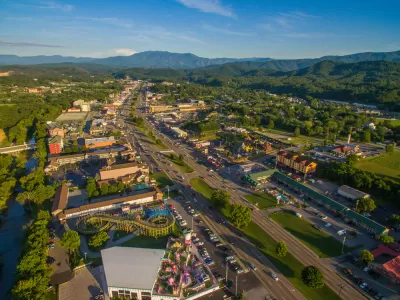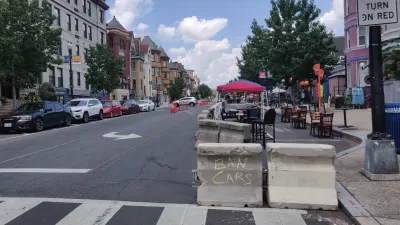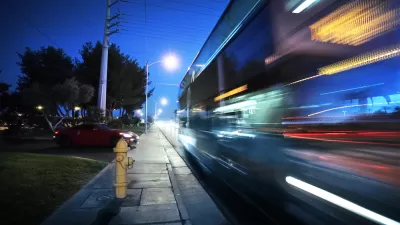It's not enough to focus solely on the design and engineering of streets when looking for ways to improve traffic safety. The fruits of the planning profession must be held to account, too.

"Academic programs in traffic engineering are often deficient in regard to paying inadequate attention to road safety concerns," according to an article by Eric Dumbaugh.
"A survey of 117 traffic engineering programs in the United States found only about one in five offer any formal instruction on traffic safety, and one may justifiably question whether there is much of any practical value contained in the few safety courses that are offered." While offering a scathing critique of the transportation engineering, Dumbaugh also notes the "significant reforms" made by the profession in the past decade, as evidenced by a large library of innovative design manuals.
Before planners start laying the blame for the country's dismal traffic safety record, again, at the feet of transportation engineers, Dumbaugh also offers this bombshell:
But these manuals call attention to what is, in my mind, an even greater safety consideration, one which has been largely ignored by professionals and academics alike. These manuals are centered on the idea that streets should be designed to address the uses and activities generated by surrounding development. It is not traffic engineers, but urban planners, who are responsible for determining a street’s developmental context. Our continued focus on the shortcomings of the traffic engineering profession leads us to ignore the manner in which planning decisions result in preventable traffic-related deaths and injuries.
Surprise: this article isn't really about engineers.
The least safe roads in communities around the United States are the direct result of local development codes, argues Dumbaugh. The concentration of retail along arterials, minimum building setbacks, and minimum parking requirements all contribute to the terrible rate of fatalities and injuries occurring on U.S. streets.
As a traffic prescription for planners to make a meaningful and effective contribution to improved traffic safety, Dumbaugh makes a comparison to the military concept of "defense-in-depth."
The effectiveness of our entire suite of defenses hinges on the policies and practices adopted by planners, such as the regional development plans that determine where future growth will occur and the zoning ordinances and subdivision regulations that govern its configuration. They establish the context in which our other layers of defense necessarily operate. And far too often, these development decisions are made with a blissful disregard of their ultimate safety consequences.
The article is also scheduled for an appearance in Transportation Alternatives’ Vision Zero Cities Journal as part of the 2020 Vision Zero Cities Conference, Oct. 19-23. The article includes more detail and a particularly cogent case study of U.S. 441, where it cuts through the city of St. Cloud, Florida.
FULL STORY: Worst Practices: How Urban Planning Fails Vision Zero

Study: Maui’s Plan to Convert Vacation Rentals to Long-Term Housing Could Cause Nearly $1 Billion Economic Loss
The plan would reduce visitor accommodation by 25,% resulting in 1,900 jobs lost.

North Texas Transit Leaders Tout Benefits of TOD for Growing Region
At a summit focused on transit-oriented development, policymakers discussed how North Texas’ expanded light rail system can serve as a tool for economic growth.

Using Old Oil and Gas Wells for Green Energy Storage
Penn State researchers have found that repurposing abandoned oil and gas wells for geothermal-assisted compressed-air energy storage can boost efficiency, reduce environmental risks, and support clean energy and job transitions.

Santa Barbara Could Build Housing on County Land
County supervisors moved forward a proposal to build workforce housing on two county-owned parcels.

San Mateo Formally Opposes Freeway Project
The city council will send a letter to Caltrans urging the agency to reconsider a plan to expand the 101 through the city of San Mateo.

A Bronx Community Fights to Have its Voice Heard
After organizing and giving input for decades, the community around the Kingsbridge Armory might actually see it redeveloped — and they want to continue to have a say in how it goes.
Urban Design for Planners 1: Software Tools
This six-course series explores essential urban design concepts using open source software and equips planners with the tools they need to participate fully in the urban design process.
Planning for Universal Design
Learn the tools for implementing Universal Design in planning regulations.
Ascent Environmental
Borough of Carlisle
Institute for Housing and Urban Development Studies (IHS)
City of Grandview
Harvard GSD Executive Education
Toledo-Lucas County Plan Commissions
Salt Lake City
NYU Wagner Graduate School of Public Service





























